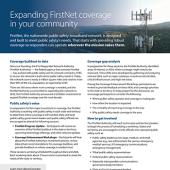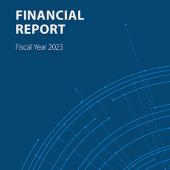This blog is a repost from the May/June 2021 edition of PSC Magazine. The original article can be accessed at PSC Magazine.
Throughout my career in emergency communications, I have had an experiential view of the dramatic evolution of technology. When I started my career as a 9-1-1 call taker, we answered calls by picking up a telephone handset and we toggled between two computer screens. Calls that came in were almost always from a landline, so location accuracy was not even a consideration. Now, almost no aspect of call management is manual but instead is a highly technical process. Today’s telecommunicators have several screens to help manage the various programs and software they use to handle every emergency call. Calls come in through a sophisticated telephony system on platforms that are also integrated with computer-aided dispatch (CAD) systems. Telecommunicators have so much more at their fingertips now than I did 20 years ago. Yet most 9-1-1 centers still operate on legacy systems, and receive and manage calls through an analog process.
The emergency communications field is also preparing for and beginning to adopt NG9-1-1 technologies. In the NG9-1-1 environment, the capabilities of emergency communications centers (ECCs) will be greatly advanced through upgrades of telephony systems and the creation of Emergency Service IP Networks or ESInets. Essentially, ESInets will graduate our call delivery systems from analog to digital. This will allow ECCs to optimize programs like text-to-9-1-1 and will eventually allow telecommunicators to receive pictures and videos from individuals in the midst of emergency situations.
Though I have seen many benefits of advances in technology for the telecommunicators and ECCs I have worked with over the years, there are also challenges. For example, many callers today call 9-1-1 from cell phones — more than 80% of the calls at the District of Columbia’s Office of Unified Communications come from cell phones. This can create a unique challenge for homing in on an incident location. Additionally, as NG9-1-1 collects more data, the role of a telecommunicator is going to continue to expand and ECCs will need more support to effectively handle and use all of this dynamic information. This support should include a structured nationwide deployment of interoperable ESInet and broadband data analysis technology, coupled with sufficient funding for its integration.
Ultimately, technology not only benefits ECCs, but the entire public safety ecosystem. It is critical to have a secure and reliable network to ensure critical information is communicated securely between the caller; the call taker; and police, fire and emergency medical responders in the field. FirstNet and NG9-1-1 are complementary initiatives, and, if coordinated, they can greatly improve the provision of public safety communications.
FIRSTNET IN EMERGENCY COMMUNICATIONS CENTERS
Whether an ECC is a two-person operation in a quiet rural town or a 400-person communications center in a bustling metropolis, an emergency is an emergency, and first responders need the unconditional capacity to communicate with each other to save lives and protect their communities. I have seen the critical necessity of FirstNet throughout my roles in the 9-1-1 industry, and it is exciting to see how the network already benefits public safety.
ENABLING TELECOMMUNICATOR EMERGENCY RESPONSE TASKFORCES
When major disasters hit, our communities are impacted in innumerable ways. In ECCs, disasters can affect staffing levels and the ability to provide minimum levels of service. To prepare for these scenarios, many ECCs turn to telecommunicator emergency response taskforces (TERTs). TERTs are teams of specially trained telecommunicators able to mobilize and deploy quickly in the aftermath of catastrophic events. FirstNet is a critical tool in TERT activations because it supports telecommunicators and emergency responders who need to communicate across jurisdictions through the nationwide, interoperable network designed specifically to meet the needs of public safety.
TERTs can provide critical support physically or virtually, and with priority and preemption on FirstNet, these teams can communicate in every scenario they face.
In Collier County, Florida, the Sheriff’s Office has been working with the Charleston County (South Carolina) Consolidated 9-1-1 Center to test the ability of TERTs to work virtually. The agencies are considering a pilot in which non-emergency calls from large events in Collier County, like the annual fair, would be transferred to telecommunicators in Charleston. Essentially, the telecommunicators in South Carolina would process the calls, enter information into the CAD system and use push-to-talk technology to dispatch responders in Florida. The first responders in Florida would access dispatch information using FirstNet-enabled devices while on scene at the event. This concept could eventually expand and allow teams around the country to support one another during major events and disasters.
ENHANCING TACTICAL DISPATCH
During a critical incident, timing is everything for responding public safety agencies. In every situation from natural disasters to high-profile planned events to man-made disasters, emergency personnel need to quickly make decisions and execute responses. Immediate access to information enhances their ability to do just that and they will often use tactical dispatch teams to provide on-scene support in managing emergency scenarios.
In Ohio, the Hamilton County Communications Center (HCCC) uses FirstNet across the agency to support its employees. HCCC is responsible for 105 public safety agencies across the county so reliability and security are key, especially for the tactical dispatch team. Tactical dispatchers can be called out during an incident to collect, process and present tactical and operational information. When HCCC tactical dispatchers are in the field, they connect to their workstations using FirstNet, giving them access to the same tools as if they were physically in the center. Priority and preemption on FirstNet ensures they have unimpeded access to those resources.
SUPPORTING LARGE EVENTS
When football’s big game came to Atlanta in February 2019, the Fulton County (Georgia) Emergency Services’ E9-1-1 Center prepared to act as back-up to the city of Atlanta in the event the city’s communications center became unable to handle the call load. The E9-1-1 Center turned to FirstNet to set up and support their backup dispatch center.
The Fulton County Airport hosted the backup center and was equipped to mirror the main communications center with CAD, voice over IP systems and portable radio dispatch boxes. Ten FirstNet-enabled devices were distributed to command staff and 20 were set up and positioned in the backup center as additional resources in the event the main phone system was compromised.
RESPONDING TO THE COVID-19 PANDEMIC
FirstNet enables ECCs to operate safely during the pandemic. When the pandemic hit, I knew the Office of Unified Communications main worksite could not safely accommodate all 400 employees in accordance with social distancing recommendations. Immediately, I spread staff between worksites, which included a back-up center and a 17-position mobile communications 18-wheeler named THOR, and transitioned about 68% of the staff to operate remotely. MiFi devices powered by FirstNet have enabled the entire administrative staff, 3-1-1 agents and non-emergency 9-1-1 call takers to telework using a secure, reliable connection from their homes. The ability to reliably and securely ensure the continuity of operations was especially important, as the Office of Unified Communications partnered with other city agencies to facilitate access to a hotline for COVID-19 resources through its 3-1-1 operations. Washington, D.C.’s 3-1-1 telecommunicators answer calls and provide information on testing sites, test results and food services. With FirstNet, staff stayed safe while remotely providing these vital services to residents and visitors.
Across the country, FirstNet supports ECCs as they serve their communities and emergency responders. In fact, the City of Alexandria (Virginia) is using FirstNet to enable remote 9-1-1 call taking and dispatching. And Fulton County now uses the portable equipment and FirstNet devices that they set up for the big game for backup capabilities during various emergencies and incidents, including their response to the pandemic.
FUTURE OF EMERGENCY COMMUNICATIONS CENTERS
Technology will continue to evolve, producing new and innovative ways for first responders to do their jobs. FirstNet keeps telecommunicators connected to the same resources they would have if they were in the dispatch center. Having a secure, reliable network expands the possibilities for emergency communications centers, enabling public safety telecommunicators to work outside of their traditional space.
As NG9-1-1 and FirstNet continue to evolve, the capabilities and resources in our ECCs will also. This is a pivotal time for ECCs across the U.S. As 9-1-1 centers handle higher call volume for increasingly extreme and dire circumstances, the industry has been collectively engaged to determine how all 9-1-1 centers can best execute their missions to serve as the vital link between the public and first responders.
As a FirstNet Authority board member, I advocate for both the collective nationwide transition of ECCs to NG9-1-1, and ensuring that our ECCs can effectively communicate with the FirstNet network. ECCs are the lifelines for our communities and the advanced technologies that integrate NG9-1-1 enhancements with FirstNet technology will improve our ability to save lives and serve our communities. I am proud to be a part of the future of public safety communications and I am excited to continue collaborating to help ensure these networks serve our first responder community.




















